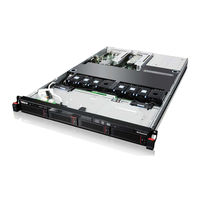User Manuals: Lenovo MegaRAID SAS Manager Application
Manuals and User Guides for Lenovo MegaRAID SAS Manager Application. We have 1 Lenovo MegaRAID SAS Manager Application manual available for free PDF download: Software User's Manual
Lenovo MegaRAID SAS Software User's Manual (401 pages)
MegaRAID SAS Software User Guide
Table of Contents
-
-
-
-
Drive Group22
-
Copyback23
-
Patrol Read25
-
Parity26
-
Hot Spares28
-
Rebuild Rate30
-
Hot Swap30
-
Drive States30
-
Beep Codes31
-
-
RAID Levels31
-
-
Overview53
-
-
-
-
-
Product Overview173
-
Pre-Boot Megacli176
-
-
Set SAS Address185
-
-
-
-
Rebuild a Drive206
-
SAS Topology213
-
-
Create a View216
-
Delete a View216
-
-
-
-
Overview227
-
-
Kernel Upgrade234
-
-
-
-
-
-
-
Activation Key323
-
Manage Snapshots340
-
Creating Views347
-
-
-
Error Levels373
-
Event Messages373
-
-
-
Trademarks399
-
Advertisement
Advertisement
Related Products
- Lenovo MegaRAID Storage Manager
- Lenovo MegaRAID command line interface
- Lenovo ThinkCentre M50e
- Lenovo ThinkCentre M57
- Lenovo ThinkCentre M57p
- Lenovo Microsoft Windows XP Conversion Kit
- Lenovo ThinkPad Huawei ME906S
- Lenovo Meet ThinkSmart One
- Lenovo ThinkCentre M51 8108
- Lenovo Mirage Camera with Daydream
